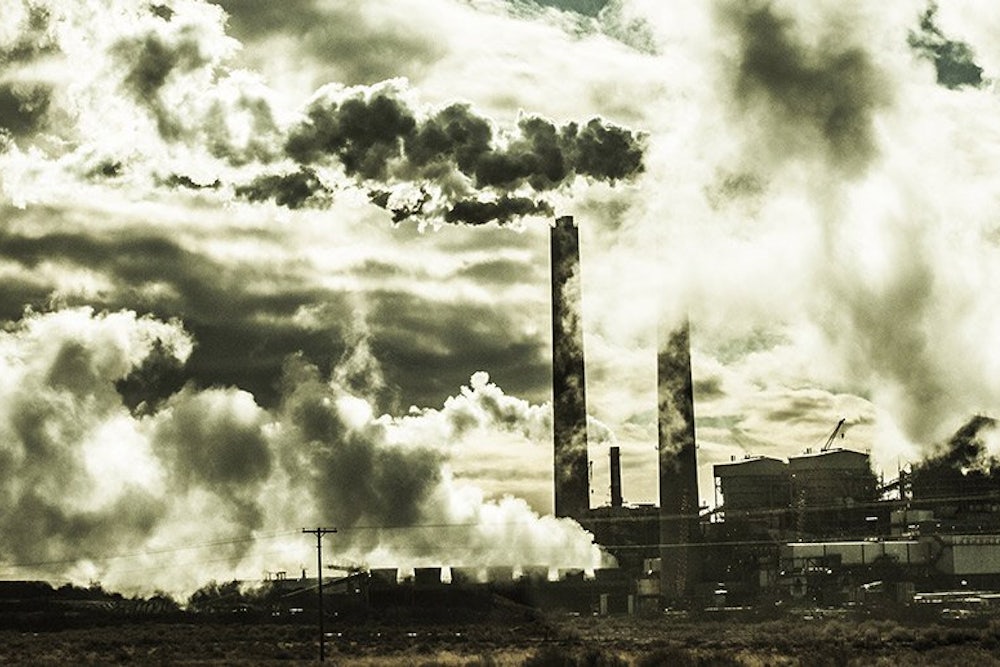The amount of nitrogen that moves from the sky into plants has doubled over the past century thanks to human ingenuity. A host of big animals—from giant kangaroos to woolly mammoths—no longer walk the Earth, assisted into extinction by human hunters. And everywhere there are more and more people, 7.2 billion and counting. Welcome to the Anthropocene.
That's the name for a proposed new epoch in the geologic record, a neologism cobbled together from Greek roots meaning the “new age of humans.” This shift is meant to signify the outsized role one species—our species, Homo sapiens, “wise man”—has begun to play on the planet. We move three times more earth and stone than all the world's rivers, even building our own islands. We have created new types of rocks, like the plastiglomerate formed from lava and discarded six-pack rings in Hawaii. We’ve even changed the chemistry of the atmosphere, raising global concentrations of the greenhouse gas carbon dioxide by 0.01 percent.
That doesn't sound like much, but it’s enough to touch levels never before breathed by our species since our distant ancestors evolved some 200,000 years ago. And it’s also enough to raise global average temperatures by nearly a degree Celsius to date—a number that’s steadily rising.
A rapid increase in all those metrics starts around the same time—circa 1950 and the post-war economic boom—a period dubbed the “Great Acceleration” by the scientists at the International Geosphere-Biosphere Program. That's also around when radionuclides, forged in nuclear blasts the world over, began to appear in the rock record after the first atom bomb test in the New Mexico desert on July 16, 1945.
But there's an even better marker of humanity's impact in the future rock record, according to a new scientific study published in the journal Scientific Reports on May 28: soot. The billions of tons of coal and oil burned every year do not completely turn into the carbon dioxide that thickens the atmosphere's greenhouse blanket. Some of it remains unchanged by flame, forming little black spheres known as “spheroidal carbonaceous particles” (SCPs) to scientists. “All soot have SCPs but not all SCPs are soot,” explains environmental scientist Karen Bacon of the University of Leeds, who helped write the new study.
Fellow environmental scientist Neil Rose of the University College London has been pulling such sooty particles out of cores from the bottom of lakes around the globe for 25 years now. The mark of humanity is readily apparent in, say, a column of peat that is a boggy brown for all the years pre-Anthropocene, represented by centimeter after centimeter, before turning black as night at the top where our epoch begins, circa 1950. In the rock record it will show up as a line of sooty black, allowing some future geologist to peg the start of this most recent epoch, Rose argued in a study published this March. Even better, the soot spike appears to be temporary, thanks to efforts to restrict the burning of fossil fuels and modern technology that captures fly ash, a combustion leftover, before it wafts up and out the smokestack. The war on coal may work out well for the geologic record—as well as the planet.
This is not the first time humanity's pyromania has been proposed as a start date for the Anthropocene. After all, human-set fires changed the continent of Australia around 40,000 years ago. But these SCPs, these tiny pitted black balls, are found from Australia to the high Arctic, in cores pulled from Antarctic ice, in the sediments of subalpine lakes, and even in the detritus piling up at the bottom of the ocean. They’re a global record of a world changing everywhere at roughly the same time.
Paired with radionuclides and all the other hallmarks of the Great Acceleration, SCPs make a strong case for an Anthropocene epoch that starts after World War II. “Sometime around the mid-twentieth century seems to be where the markers are clearest, most widespread, and most nearly synchronous,” says Jan Zalasiewicz, a geologist at the University of Leicester and chairman of the working group in charge of recommending whether or not the Anthropocene should be added to the official, more-than-four-billion-year long geologic timescale.
In 10,000 years time, the planet may still be warmer thanks to all the long ago combustion marked by those soot particles. Even in a million years time, when the climate should have returned to its normal rhythms, the soot will still be there hardening into rock—along with the other markers of twentieth-century humanity, like the magma-like plutons formed by underground nuclear tests or the punctures and voids in the rock record made by our mines and boreholes.
In a historical sense, what’s next must be a better, longer-lasting Anthropocene, or bust. “I do not know what comes next,” says Graeme Swindles, a geologist at the University of Leeds in England and the leader of the Scientific Reports research. “It's very worrying.” If the Anthropocene’s namesake species does not prove as wise as its Latin self-description, then there will be no one left to decipher this story from stone.
